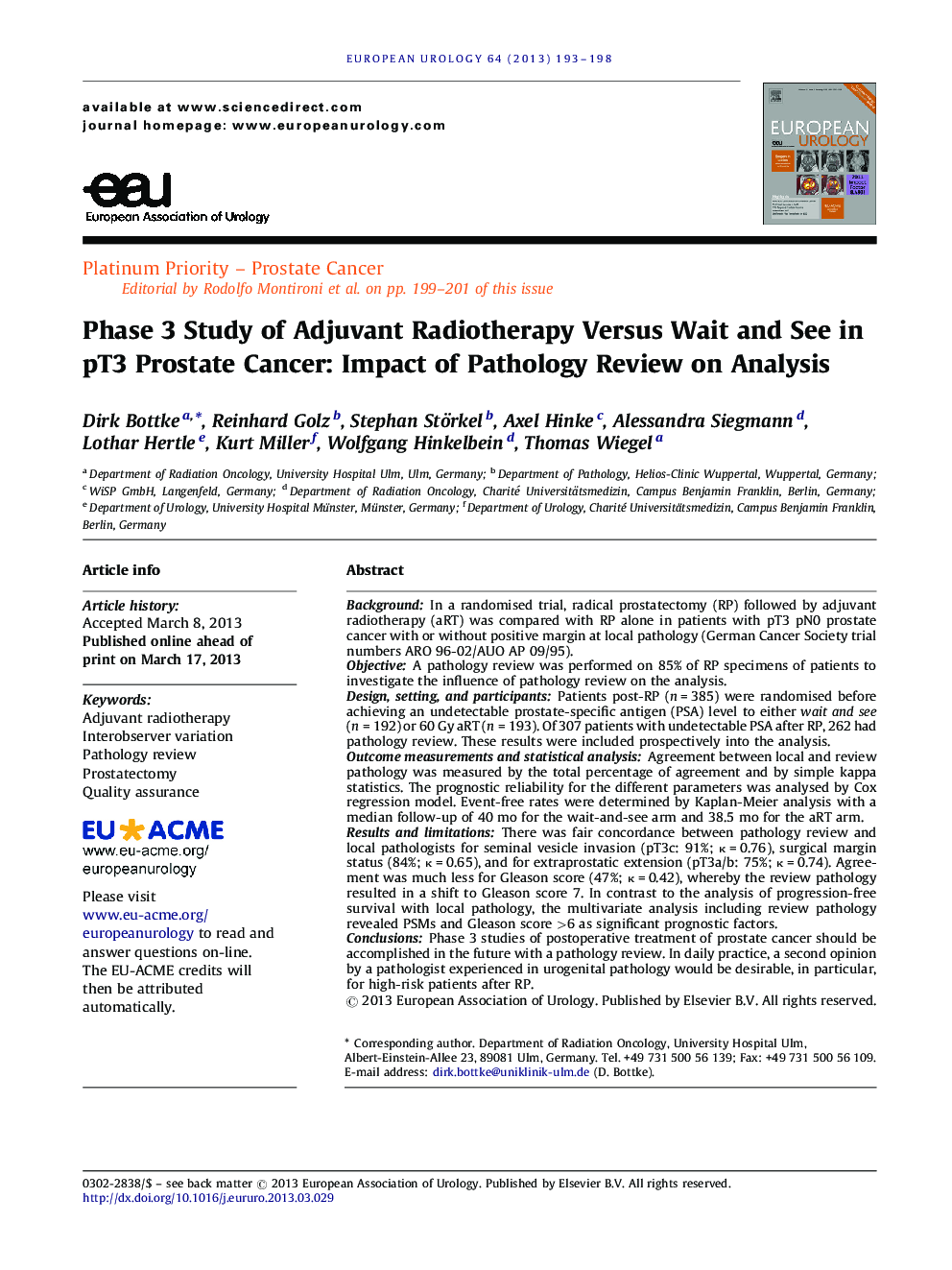| Article ID | Journal | Published Year | Pages | File Type |
|---|---|---|---|---|
| 3925943 | European Urology | 2013 | 6 Pages |
BackgroundIn a randomised trial, radical prostatectomy (RP) followed by adjuvant radiotherapy (aRT) was compared with RP alone in patients with pT3 pN0 prostate cancer with or without positive margin at local pathology (German Cancer Society trial numbers ARO 96-02/AUO AP 09/95).ObjectiveA pathology review was performed on 85% of RP specimens of patients to investigate the influence of pathology review on the analysis.Design, setting, and participantsPatients post-RP (n = 385) were randomised before achieving an undetectable prostate-specific antigen (PSA) level to either wait and see (n = 192) or 60 Gy aRT (n = 193). Of 307 patients with undetectable PSA after RP, 262 had pathology review. These results were included prospectively into the analysis.Outcome measurements and statistical analysisAgreement between local and review pathology was measured by the total percentage of agreement and by simple kappa statistics. The prognostic reliability for the different parameters was analysed by Cox regression model. Event-free rates were determined by Kaplan-Meier analysis with a median follow-up of 40 mo for the wait-and-see arm and 38.5 mo for the aRT arm.Results and limitationsThere was fair concordance between pathology review and local pathologists for seminal vesicle invasion (pT3c: 91%; κ = 0.76), surgical margin status (84%; κ = 0.65), and for extraprostatic extension (pT3a/b: 75%; κ = 0.74). Agreement was much less for Gleason score (47%; κ = 0.42), whereby the review pathology resulted in a shift to Gleason score 7. In contrast to the analysis of progression-free survival with local pathology, the multivariate analysis including review pathology revealed PSMs and Gleason score >6 as significant prognostic factors.ConclusionsPhase 3 studies of postoperative treatment of prostate cancer should be accomplished in the future with a pathology review. In daily practice, a second opinion by a pathologist experienced in urogenital pathology would be desirable, in particular, for high-risk patients after RP.
